Advertisement
Giving Birds Little Anklets Is Hard Work. Here's Why It's Important For Studying Climate Change
Resume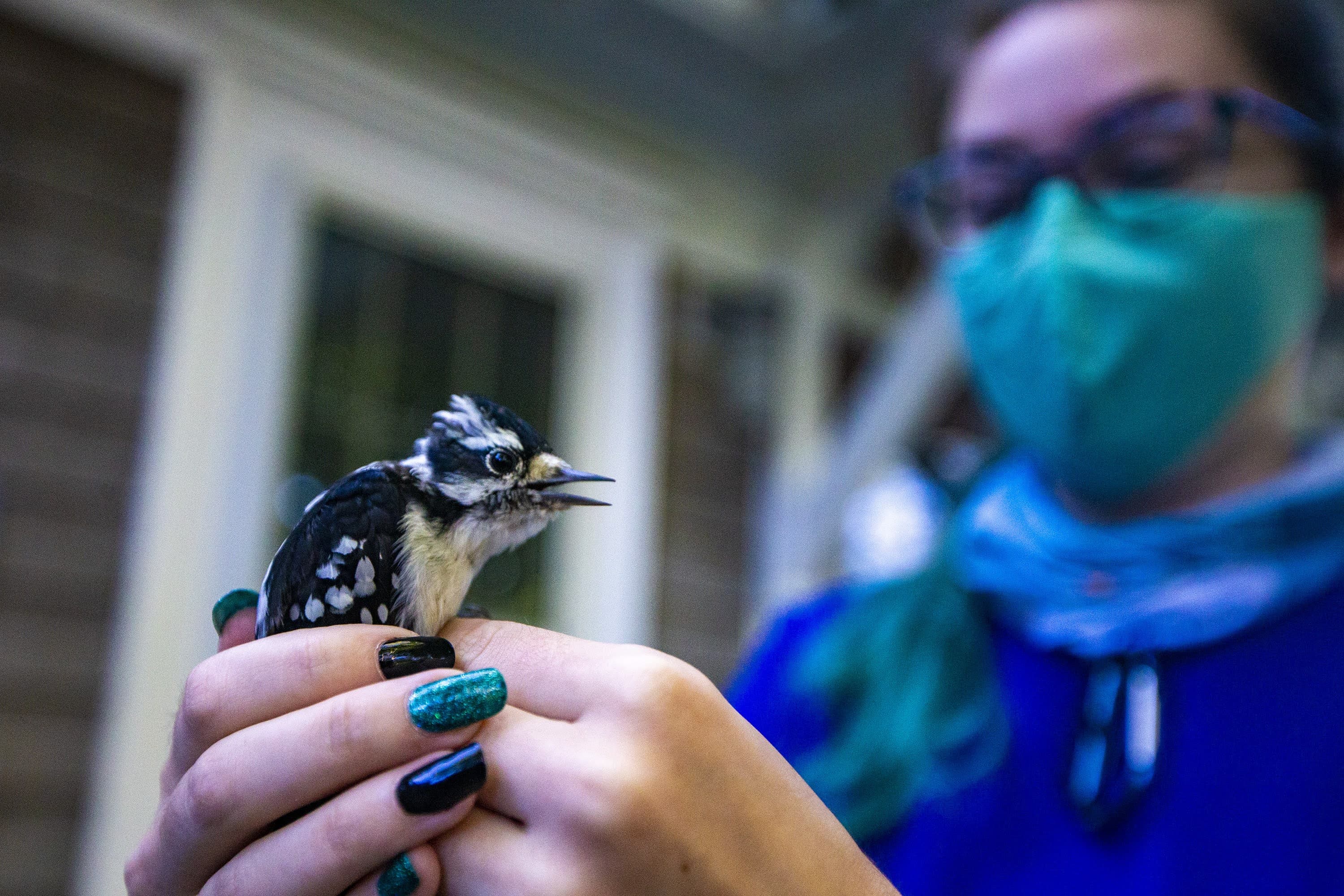
Evan Dalton hears the catbird long before he sees it.
The bird has a distinctive squawk that sounds sort of like a cat in distress — once you hear it, it's hard to forget. On a recent morning in Plymouth, Dalton hears a catbird call and picks up his pace.
"I think Megan got a bird," he says.
Dalton is the director of the Manomet Observatory in Plymouth, one of the oldest bird banding labs in North America. By placing numbered ankle bands onto birds passing through through their 40-odd acres of woods, they’ve been tracking the rise and fall of species for more than 50 years.
Manomet has banded more than a quarter million birds since 1966, and as one of a network of bird observatories across North America, it has helped answer pressing questions about habitat loss, ecological shifts and climate change.
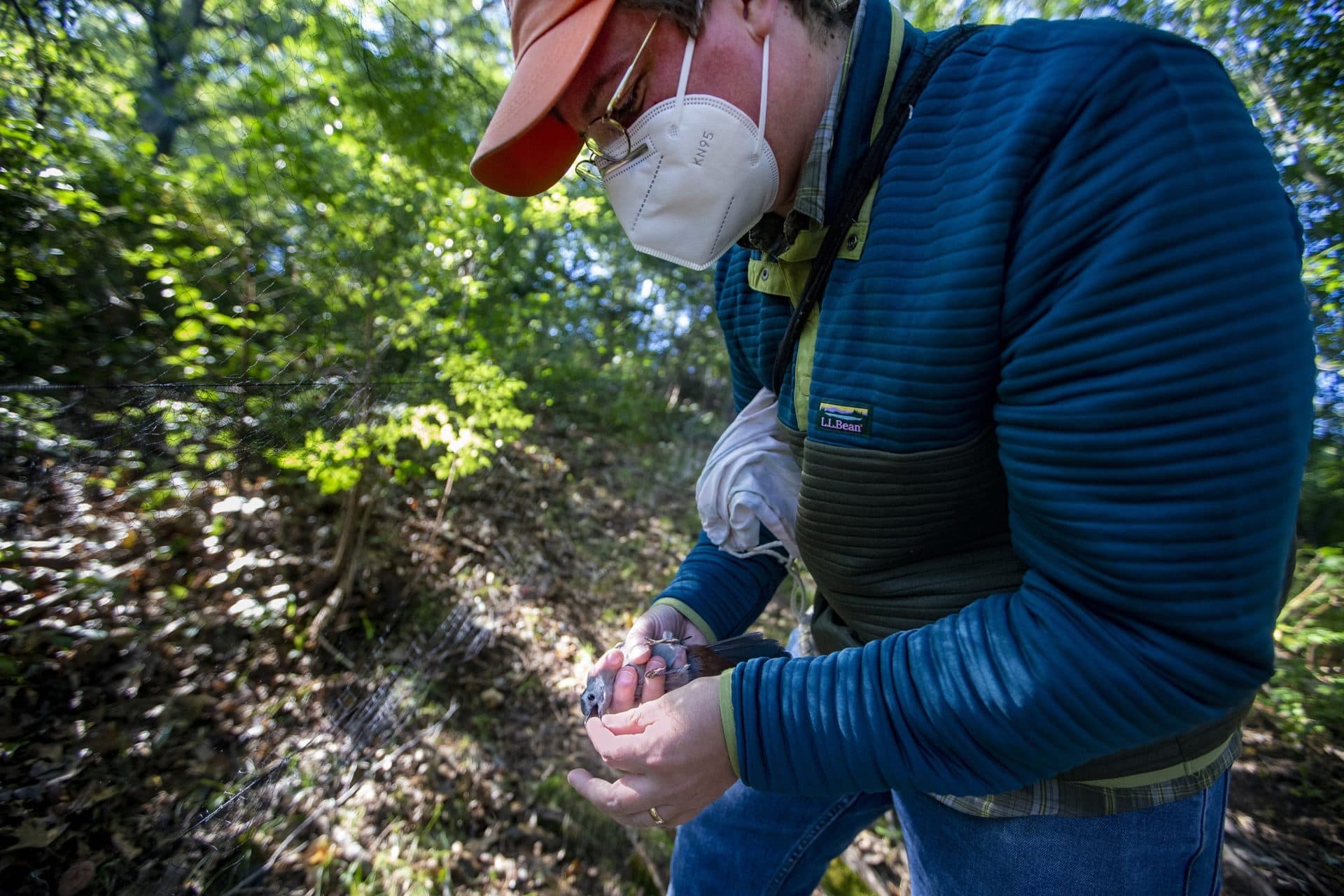
Birds do a lot for humans, says Dalton: they attract tourists, they eat lots of bugs and they give us clues about how the planet’s holding up. When the birds aren’t doing so well, it’s usually because something in the ecosystem is out of whack, and that’s not great news for us.
The information collected at Manomet over five decades shows a striking decline in 60% of bird species migrating through Plymouth, echoing findings by Mass Audubon and other organizations. Data collected through Manomet's International Shorebird Study have contributed to other landmark research, like the 2019 study reporting 3 billion fewer birds in the U.S. and Canada now than in 1970. Scientists called that finding “a staggering loss that suggests the very fabric of North America’s ecosystem is unraveling.”
"I think many people have come to the realization that birds are fantastic indicators of ecological health," says Dalton. "We're actually able to study movements of birds throughout hemispheres at this point, just through simple bird banding practices."
September is the height of fall migration, and millions of birds are winging their way through Massachusetts on their way south for the winter. Some of them stop in Plymouth to stuff themselves with bugs and berries and fatten up for the long flight ahead.
One visitor this morning is a catbird; and judging by the way it's squawking, it's not thrilled to be caught in one of Manomet's mist nets.
Dalton catches up with Megan Gray — one of the lead banders at Manomet — just as she stoops down and gently untangles the bird. It’s slate gray, a little smaller than a pigeon, with a sweeping, graceful tail. It's a gray catbird, one of the most commonly banded birds at Manomet. This one already has a band.
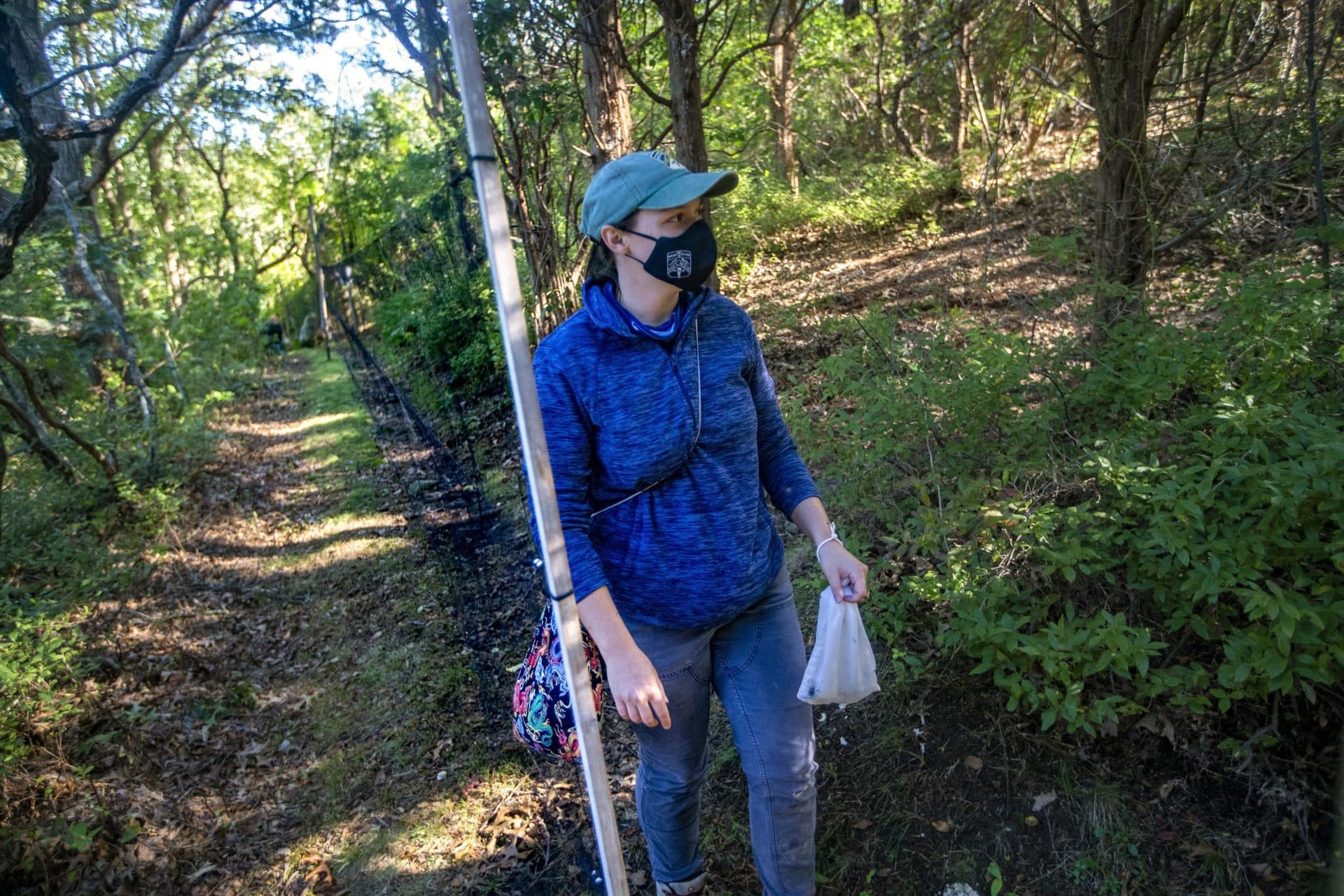

Gray says they banded the bird about a week ago. "He's been fattening up for migration, and we just caught him again."
Gray gently slides the bird into a small cloth bag made from an old pillowcase, and keeps walking. This time of year, the banders can catch 100 birds a day in the half-mile of "mist nets" stretched alongside paths in the woods.
"It basically looks like a 7-foot-tall, 40-foot-long hairnet," says Dalton. "We've kept our nets in the same location, and by keeping track of when our nets are open, we can actually statistically control year to year, and we're able to compare the numbers from year to year."
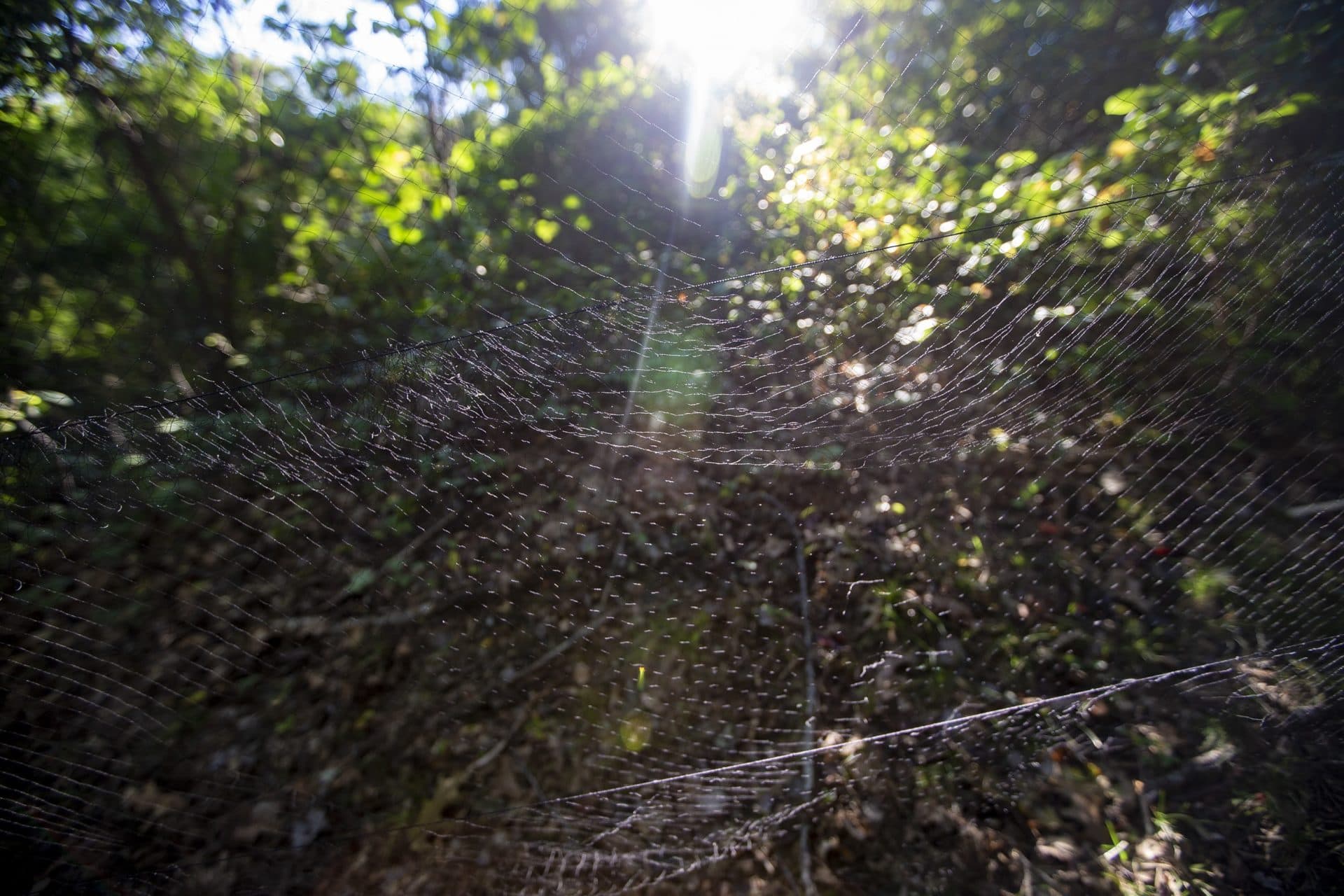
The team walks the nets exactly once each hour, from about dawn to dusk, carefully gathering every bird they find, including woodpeckers, wrens, the occasional hawk, and lots of catbirds.
The banders bring the birds back to the lab, measure and weigh them, check their ages and sex. Then they give each bird a tiny numbered band around its ankle — except for repeat visitors that already have a band, like that first catbird they found. They record all the information on the computer, before then setting the birds free. The whole process, from capture to release, takes about 10 minutes.
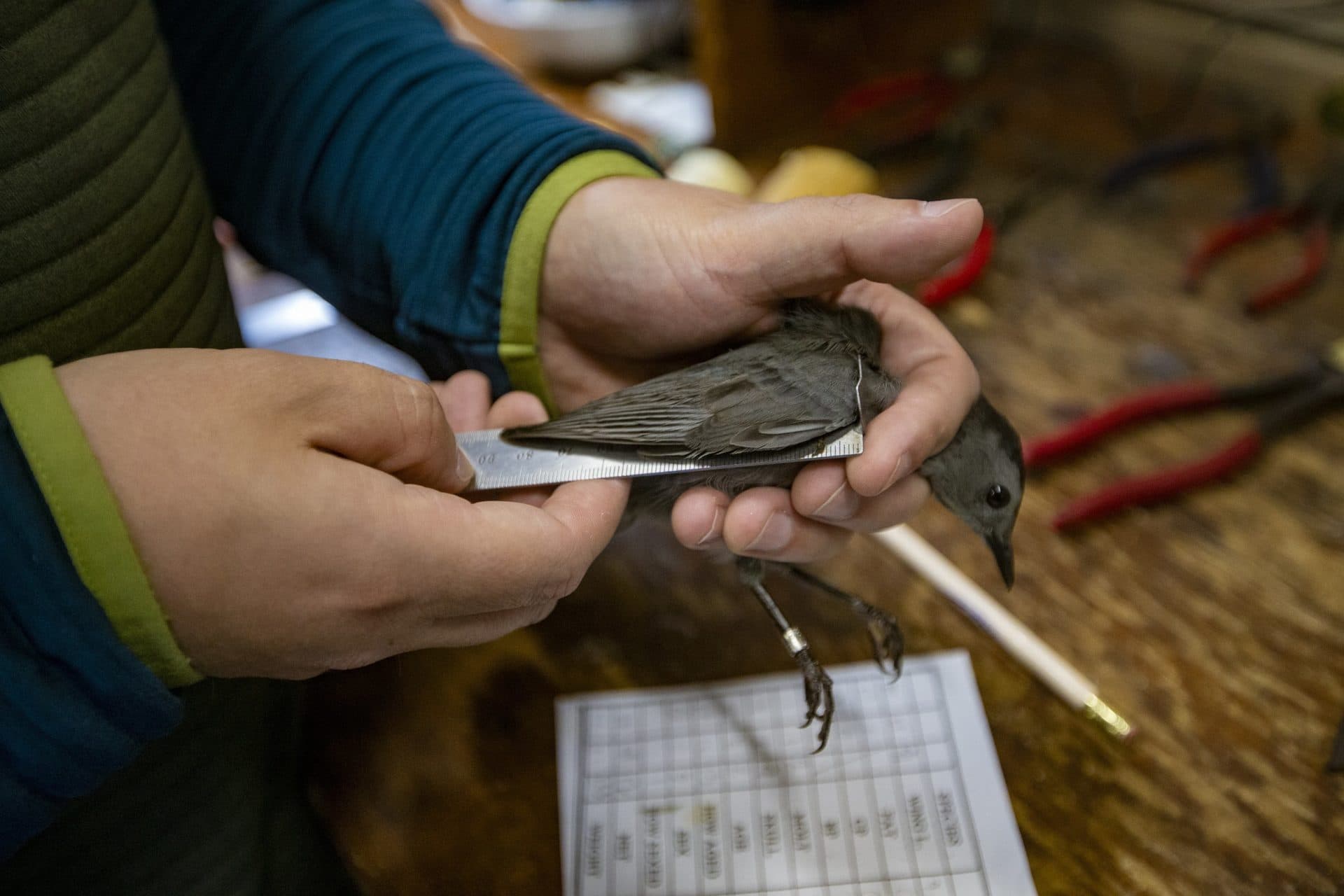
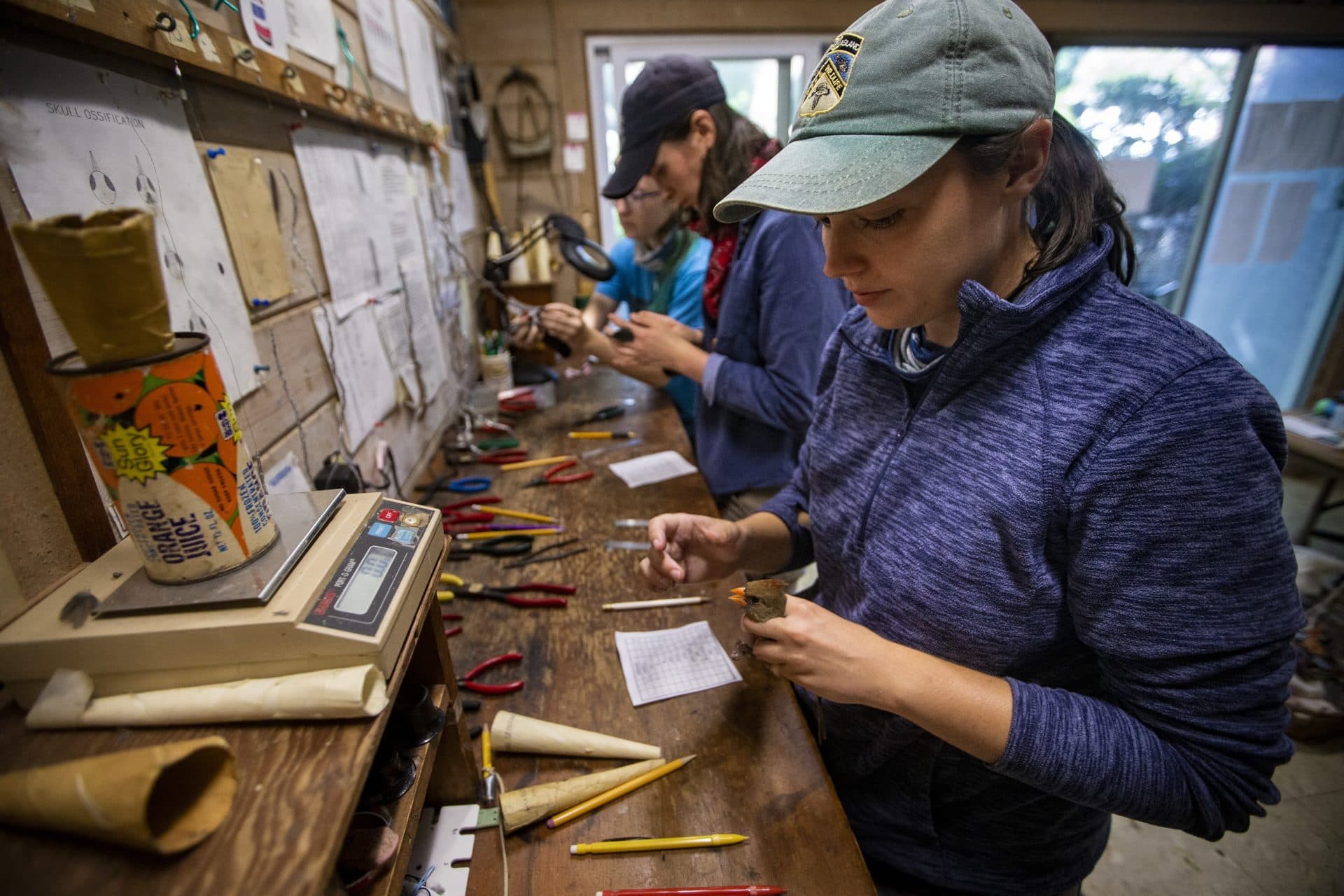
"People that do this, they care immensely about the birds that we’re handling. We've got it down pretty much to an art," says Amy Hogan, one of the bird banders. "The data is not more important to us than the bird is."
The data are important, though. Manomet is one of about 100 banding labs globally; the few dozen labs in North America send data to a centralized office run by the U.S. Geological Service and the Canadian Wildlife Service. The data from Manomet are contributing to a growing understanding of how bird numbers are declining overall, and what role climate change is playing.
Dalton says the reasons for population decline vary from species to species. There are still lots of catbirds in Plymouth, for instance, but they can travel thousands of miles each year. Losing a remote habitat — to development, sea-level rise or wildfires — can hurt them.
"People that do this, they care immensely about the birds that we’re handling. We've got it down pretty much to an art. The data is not more important to us than the bird is."
Amy Hogan
"This bird could have a dozen or more spots that are very important to its annual cycle. The loss of one of those could completely throw them on a tailspin," says Dalton. "It is through banding that we can actually determine some of these spots that they do use, so we can try to prioritize the sites that they might frequent."
Climate change has actually helped some birds expand their range. Warmer winters have led to more Carolina wrens and northern cardinals in the Northeast than there used to be.
But warmer, earlier springs are leading to earlier flower blooms and insect hatchings, and that could throw migrating birds off their game. For instance, the birds may show up in May to gorge on green caterpillars, only to find the bugs have already come and gone. It’s called an “ecological mismatch,” and it can become more common with climate change.
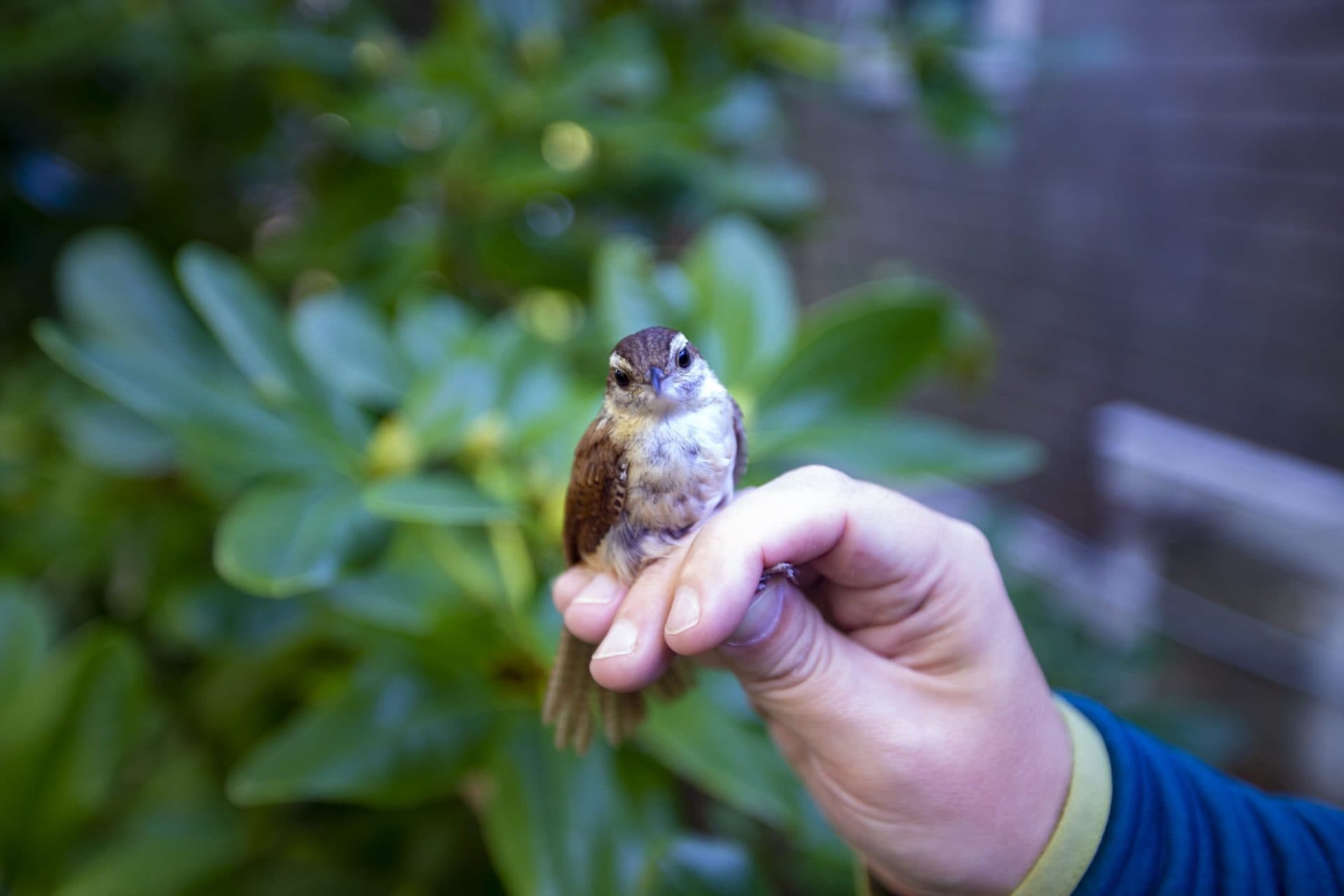
"It's really through long-term research that you can start to tease out these patterns," says Dalton. "That's how people start noticing them in the first place."
Back at the lab, the banders look up the number of the catbird they caught earlier. Turns out it was born last summer.
"That bird hatched out in a nest last year, and then it migrated south somewhere — it could have gone as far as the Yucatán," says Dalton.
That’s a long way for a little bird to fly. And that’s part of why studying them is so valuable, he says.
Birds see the world without borders, as one interconnected, interdependent ecosystem. To protect them — and ourselves — from the worst effects of climate change, he says, maybe a birds-eye view is just what we need.
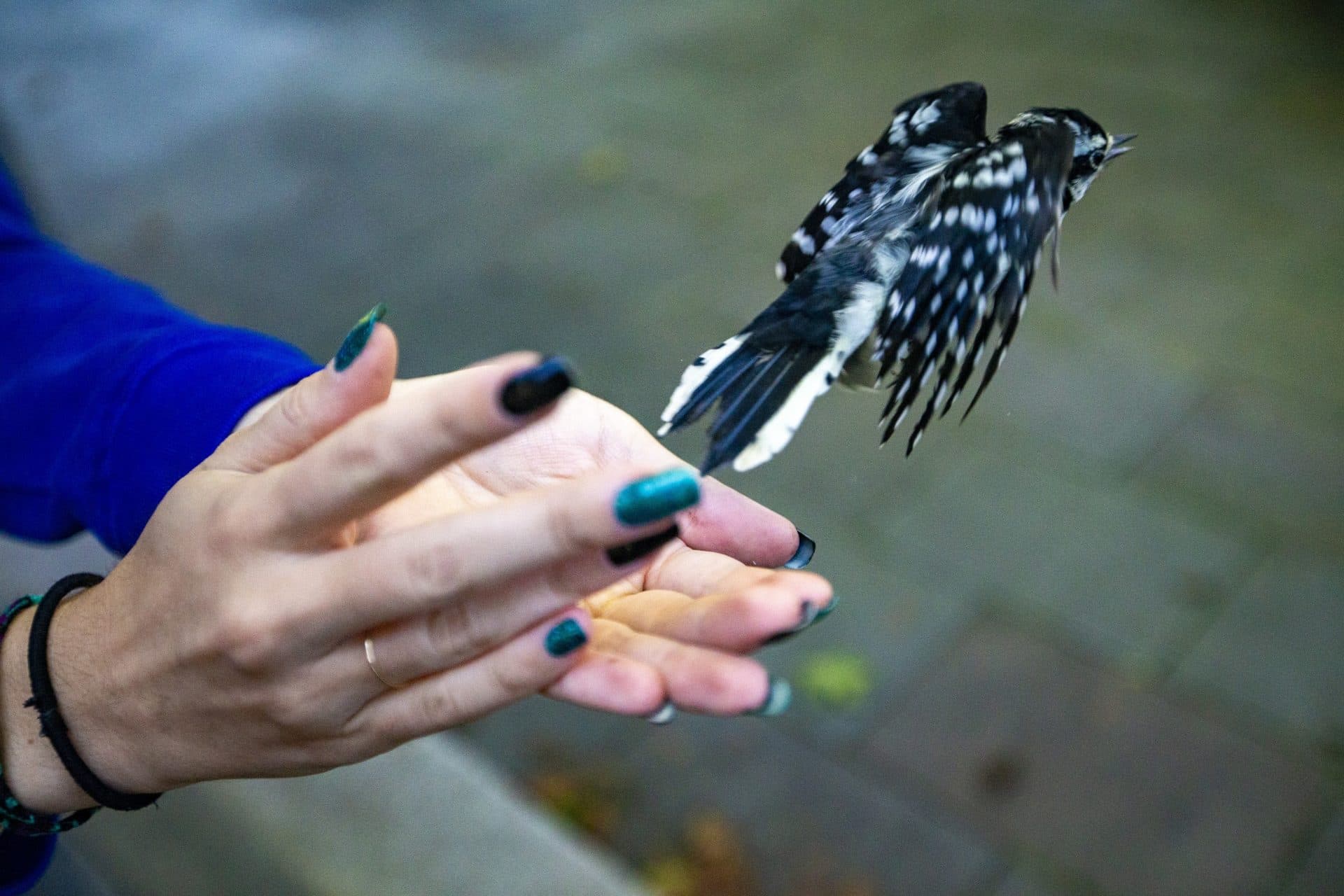
Editor's note: In the original version of this story the photo of the Carolina wren was misidentified as a blackpoll warbler. WBUR regrets the error.
This article was originally published on September 29, 2021.
This segment aired on September 29, 2021.
